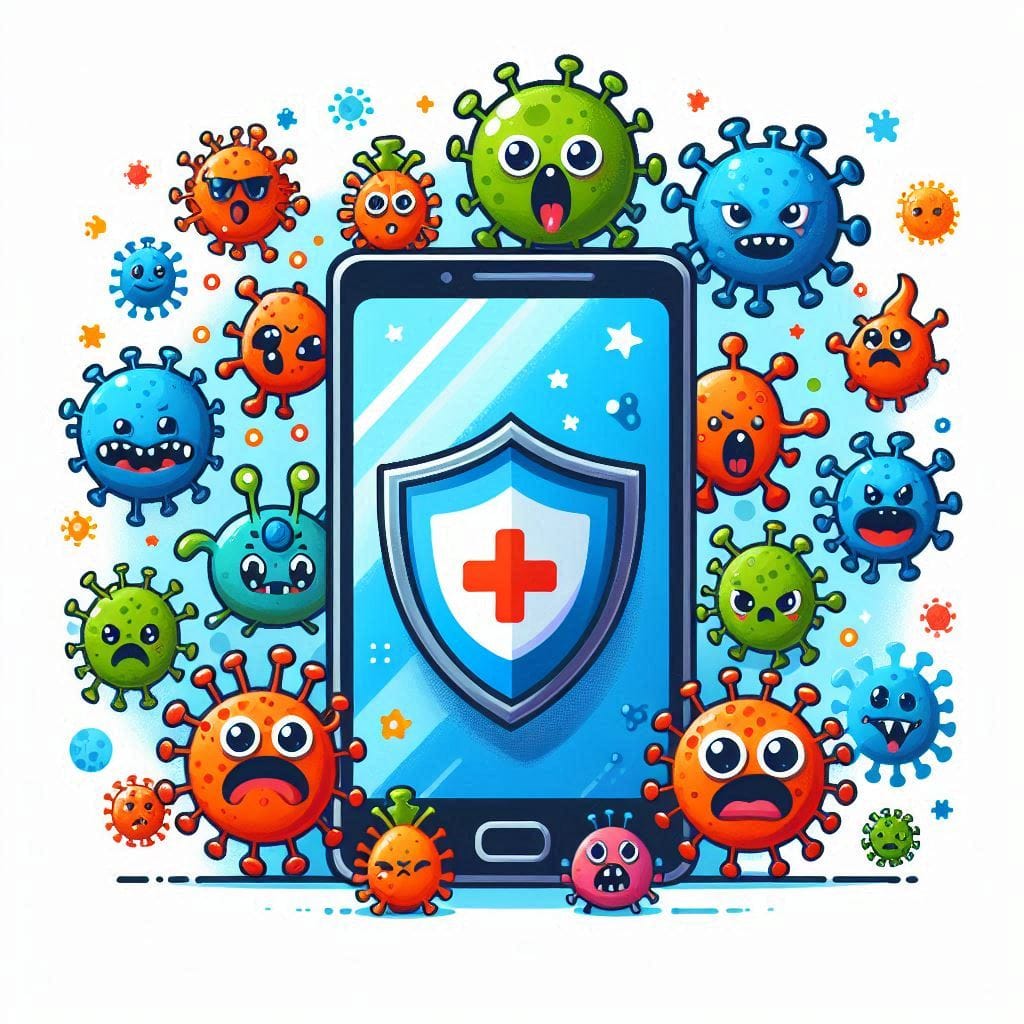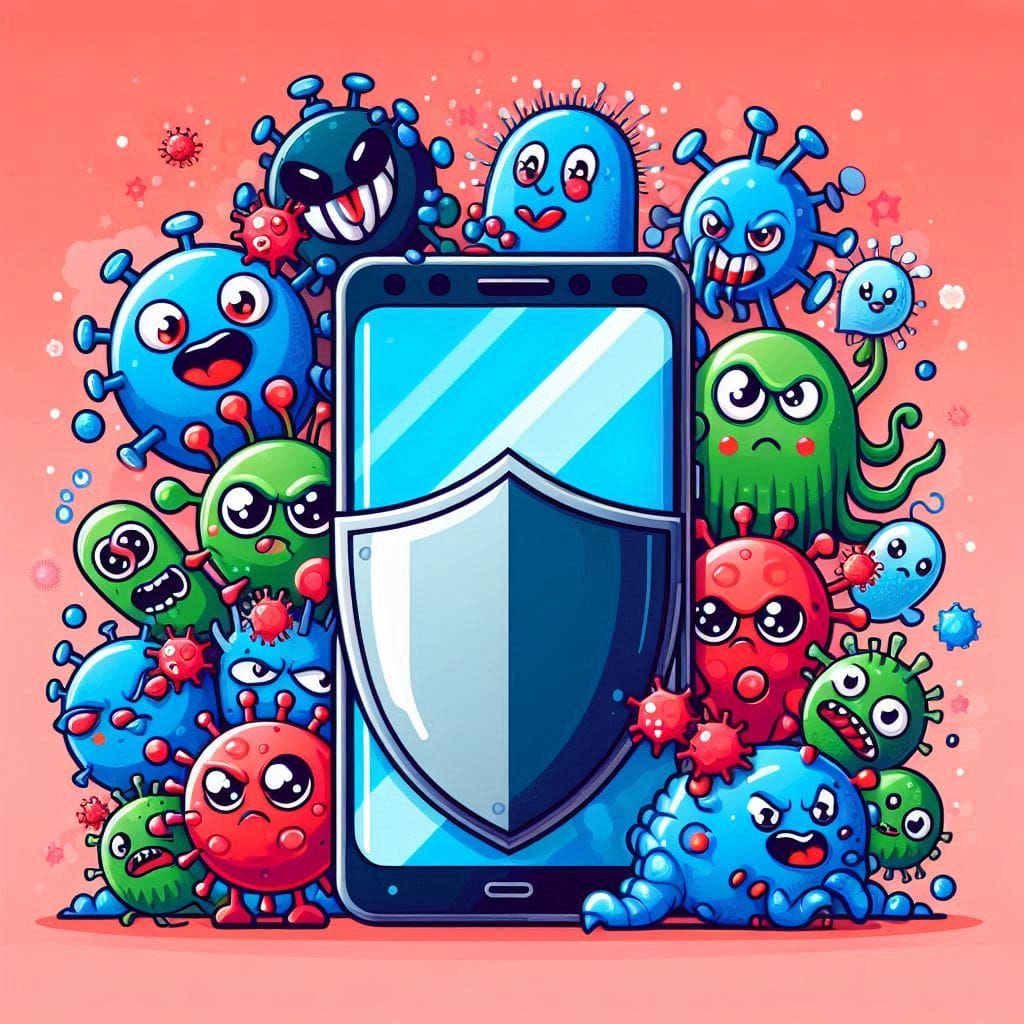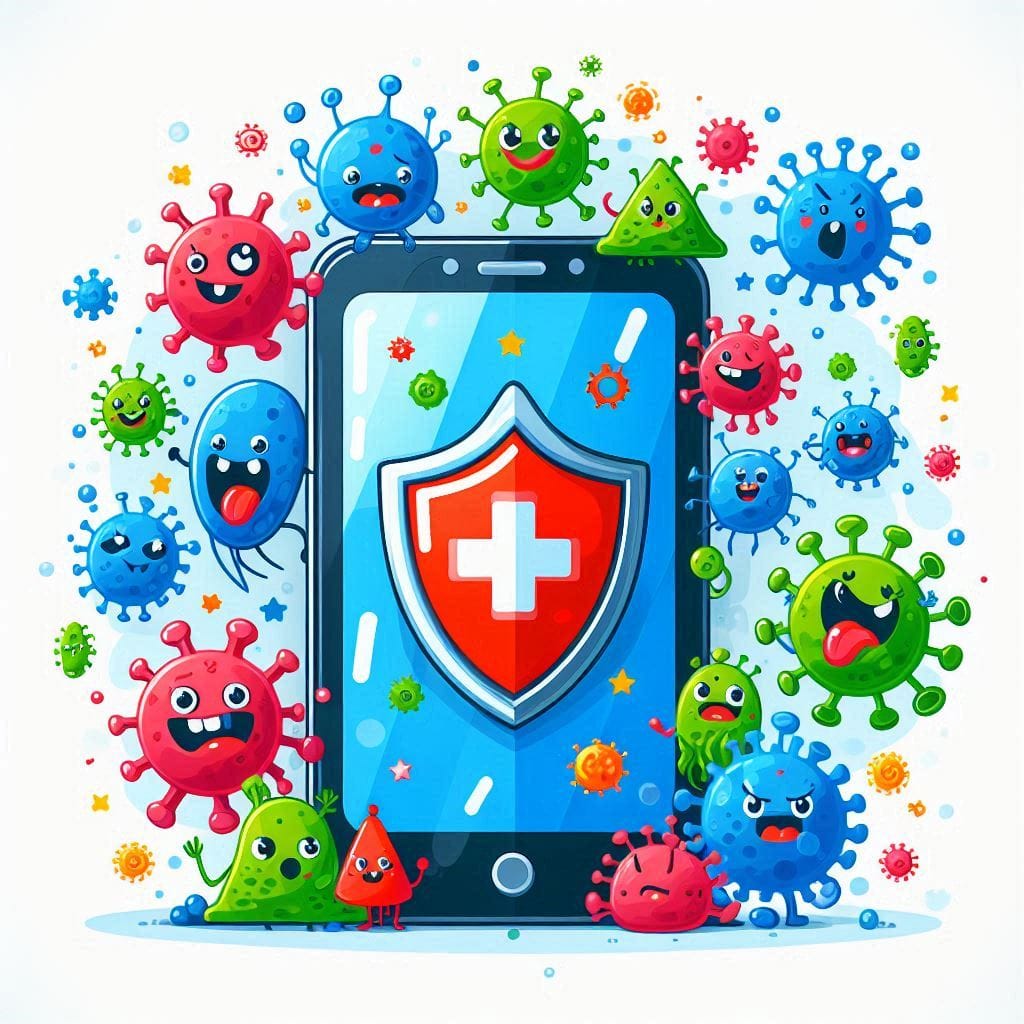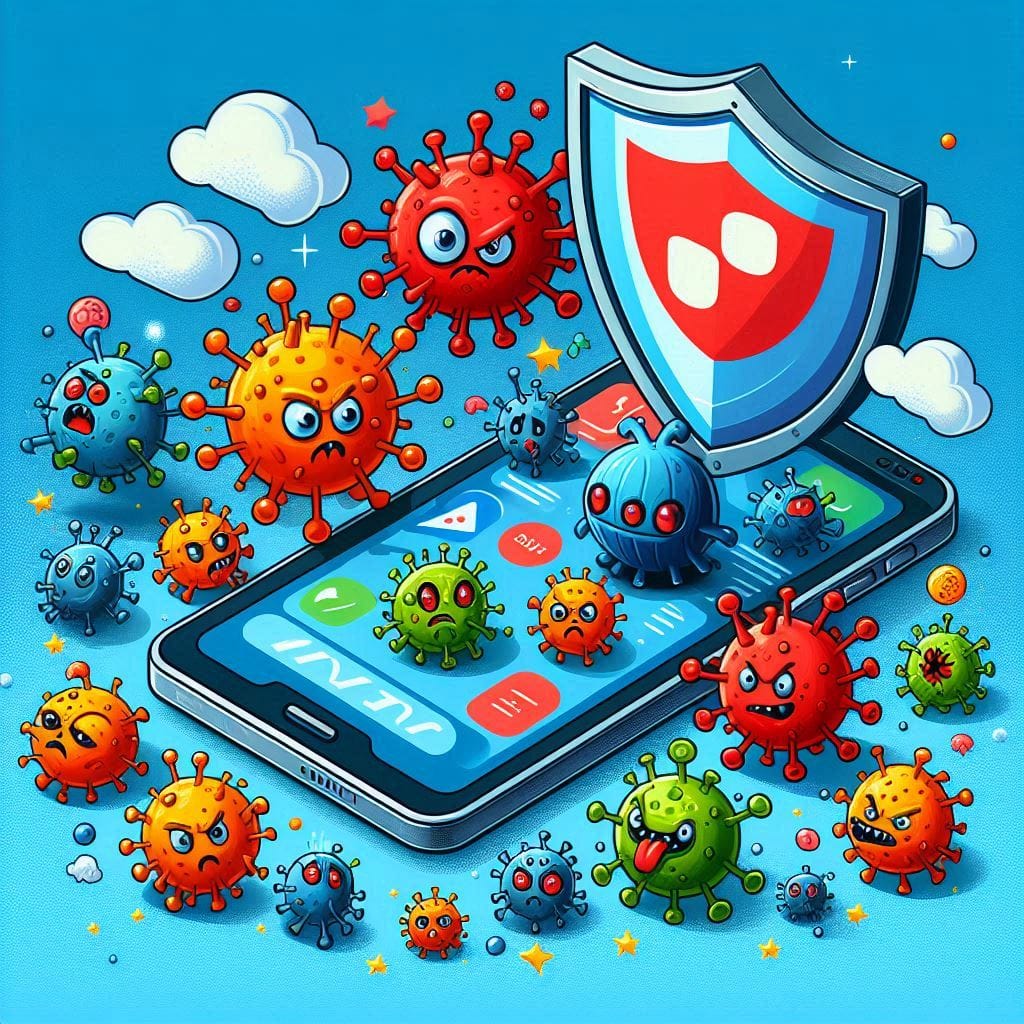Introduction: Why Protecting Your Phone from Viruses is Crucial
In today’s digital world, smartphones are more than just communication tools—they store sensitive personal data, financial information, and access to critical accounts. How to protect your phone from viruses is essential to avoid data breaches, identity theft, and performance issues.
I learned this lesson the hard way when I downloaded an app from an unofficial source, thinking it was a cool new utility tool. Within hours, my phone started acting strangely—random pop-ups appeared, apps crashed, and my battery drained unusually fast. At first, I didn’t know what was wrong. However, after researching the symptoms, I realized my phone had been infected with malware. The situation forced me to perform a factory reset, losing some of my unsaved data. Since then, I’ve become extremely cautious about cybersecurity.

How Do Phones Get Viruses?
Before diving into protection methods, it’s essential to understand how viruses infiltrate smartphones:
- Downloading Malicious Apps: Unauthorized third-party app stores often host malware-infected apps.
- Clicking on Suspicious Links: Phishing attacks trick users into downloading malicious software.
- Connecting to Unsecured Wi-Fi: Public networks can expose your device to cyber threats.
- Opening Infected Email Attachments: Spam emails often contain virus-laden files.
- Not Updating Software: Outdated OS and apps may have security vulnerabilities.
One of the most shocking experiences I had was when I received an email that looked exactly like it came from my bank. It asked me to verify my account details. I almost fell for it, but something felt off. When I double-checked the sender’s address, I noticed it wasn’t my bank’s official domain. This near-miss made me more vigilant about phishing attempts.
10 Steps to Protect Your Phone from Viruses
1. Download Apps Only from Trusted Sources
Always use official app stores like Google Play Store or Apple App Store. Verify app permissions and read user reviews before installing.
Once, I was tempted to download a premium photo editing app for free from a third-party site. After installation, my phone slowed down drastically. Later, I found out that the app had hidden adware that kept running in the background, collecting my data. It was a nightmare to remove, and I had to factory reset my phone to completely get rid of it.
2. Enable Google Play Protect or Apple Security Features
- Google Play Protect scans apps for malware.
- Apple’s security system prevents unauthorized installations.
After my malware scare, I made it a habit to check Google Play Protect frequently. It’s a great tool for detecting harmful apps before they cause damage.
3. Keep Your Phone Updated
Ensure your operating system and apps are up-to-date to fix security vulnerabilities.
There was a time when I ignored update notifications, thinking they were just about new features. However, I realized that updates also include security patches that fix vulnerabilities exploited by hackers.
4. Install a Reliable Mobile Security App
Consider using antivirus software like:
- Norton Mobile Security (Visit Norton)
- Bitdefender Mobile Security (Visit Bitdefender)
- Avast Mobile Security (Visit Avast)
I installed a mobile security app after my malware incident, and it has since provided real-time protection, blocking potential threats before they can infect my device.
5. Be Cautious with Public Wi-Fi
Avoid connecting to unsecured networks. Use a VPN to encrypt your internet traffic and keep hackers at bay.
I once used public Wi-Fi at a café without a VPN, and soon after, I noticed an unauthorized login attempt on my social media account. Since then, I’ve relied on a VPN whenever I need to connect to a public network.
6. Avoid Clicking on Suspicious Links
Phishing attacks can disguise themselves as legitimate emails or text messages. Always verify sources before clicking.
A friend of mine clicked on a fake Amazon gift card link and ended up losing access to his email account. That story reinforced the importance of being skeptical of too-good-to-be-true offers.

7. Regularly Back Up Your Data
Store backups on the cloud or an external device to prevent data loss from malware attacks.
I had a scare once when my phone froze and refused to start. Fortunately, my backups were up to date, so I didn’t lose important files.
8. Enable Two-Factor Authentication (2FA)
Secure your accounts with 2FA for an extra layer of protection.
Thanks to 2FA, I was able to prevent unauthorized access to my email when someone tried logging in from another country.
9. Check App Permissions
Review app permissions regularly and disable unnecessary access to personal data.
Once, I discovered a flashlight app that requested access to my contacts and location—unnecessary! I immediately uninstalled it and became more mindful of app permissions.
10. Reset Your Phone if Infected
If you suspect your phone is compromised:
- Run a security scan.
- Remove suspicious apps.
- Factory reset if necessary.
A friend had to factory reset his phone after an aggressive malware infection. It was a hassle, but it effectively removed the virus and restored his phone’s performance.
Additional Security Tips
Use Strong Passwords and Biometric Authentication
I once used the same password for multiple accounts, and when one of them got compromised, others were at risk too. Now, I use a password manager to generate and store strong, unique passwords.
Be Wary of Bluetooth Connections
Some malware can spread via Bluetooth. I always keep my Bluetooth off in public places unless I need it.
Secure Your SIM Card
A SIM swap scam once targeted a colleague, allowing hackers to access his bank account. Enabling a SIM PIN can help prevent unauthorized access.

FAQs About Protecting Your Phone from Viruses
Q1: Can iPhones Get Viruses?
A: Although rare, iPhones can be affected by malware, especially if jailbroken. Always keep iOS updated and avoid unauthorized apps.
Q2: How Can I Tell If My Phone Has a Virus?
A: Signs include slow performance, unexpected pop-ups, overheating, and battery drain.
Q3: Is free antivirus software safe?
A: Some free antivirus apps are effective, but always choose reputable brands to avoid fake security apps.
Q4: What Should I Do If My Phone Gets a Virus?
1. Delete suspicious apps.
2. Run a full security scan.
3. Change passwords for sensitive accounts.
4. Perform a factory reset if necessary.
Final Thoughts: Keep Your Phone Virus-Free
By following these strategies, you can significantly reduce the risk of malware attacks and keep your phone secure. Stay vigilant, update your software regularly, and only download apps from trusted sources.
I’ve personally experienced the hassle of dealing with phone malware, and these steps have helped me keep my device safe ever since. Implement them today to protect your phone from cyber threats.
Looking for more cybersecurity tips? Check out our guide on How to Boost Productivity with Tech Hacks.
Pingback: Why Mindfulness is Key to Better Mental Health

